
David McVicar’s staging for Handel’s ‘Agrippina’ (Photo: Marry Sohl / Met Opera)
If It Ain’t Baroque, Don’t’ Fix It: Part Two
Baroque opera has little appeal for me. I know, I know. I need to get with the times. And, yes, I am fully aware that those longwinded works from the early 18th century have been back in vogue for nearly half a century. But I can’t help it. I find their laborious plots and over-complicated story lines a chore, the set pieces painful to listen to (well, not all of them), and especially the samey-samey quality of the music and solo numbers (called aria da capo). And those annoyingly drawn-out recitatives are especially egregious.
Yet, I keep saying to myself, Get a grip on it already! Give yourself a break. Now, with all the above said and done (and off my chest), I would much rather watch a live or pre-recorded performance of a Baroque piece than listen to one on the radio or compact disk.
Speaking of which, the Metropolitan Opera’s premiere of Handel’s 1709 Agrippina was touted as the oldest work in the company’s active repertoire. That claim may very well hold up for the opera house itself at Lincoln Center. However, I seem to recall some mid-1970 performances at the mini-Met of Sir Henry Purcell’s one-act Dido and Aeneas from 1689, which would place that opus a good two decades ahead of Agrippina.
Historically, George Frideric Handel’s first opera seria for Italy was Rodrigo, written for a Florentine academy sometime around 1707. Agrippina appeared two years later, for Venice, and became his first big stage success. It certainly proved its worth at the Met this past season, having received a rousing reception at its debut. I heard and saw Agrippina this weekend as part of the Live in HD transmission, available for free on the Met Opera on Demand online streaming service. The original broadcast date was February 29, 2020.
Sir David McVicar’s production set the work in modern times. In actuality, this was a 20-year-old production, created by the Théâtre de la Monnaie in Brussels, Belgium, and adapted for the stage by the Metropolitan. John Macfarlane was credited with the set and costume designs, Paule Constable with the lighting, Gareth Morrell, harpsichordist Bradley Brookshire, and Dimitri Dover with musical preparation, and Hemdi Kfir with the Italian diction.
Handel’s opera concerns the machinations of the wickedly Machiavellian Empress Agrippina, married to Roman Emperor Claudius (called Claudio in the opera). It’s historically inaccurate, irreverent and funny, but the guffaws and chuckles begin to stick in one’s throat when we relate the characters’ machinations to actual real-life events. Politics, so the saying goes, makes for strange bedfellows, as they most assuredly do here.

Agrippina (Joyce DiDonato) greets her husband, Emperor Claudius (Matthew Rose)
And as he did with the earlier Giulio Cesare from 2013, Sir David, by way of composer Handel and his librettist Cardinal Vincenzo Grimani, has brought poet Tacitus to life (in fact, one of the minor characters, Lesbo, appears early on holding a copy of the Roman historian’s book). Given these sets of parameters, modern-day audiences will have no trouble following the meandering plotline.
Into the Roman Woods
In this all-but contemporary staging, evil runs rampant and corruption is a way of life. As with most such Baroque products, the plot moves slowly and fitfully through prolonged dry recitatives (or recitativo secco), while highly embellished da capo arias tend to express, by turns, lofty sentiments or banal syllogisms (more like clichés, if you get my drift). These are repeated in A-B-A sequence, which in practice are a perfect forum for displaying an individual artist’s technical and vocal abilities by means of fast runs, roulades, fioriture, cadenzas, and so forth — a veritable feast for the ears if not the eyes.

Agrippina (Joyce DiDonato) has a one-on-one with her son Nerone (Kate Lindsey)
To director McVicar’s credit, he kept things moving. The action never stops for a second, which wins praise from yours truly for sheer inventiveness. And a most feisty and accommodating cast brought the onstage shenanigans smoothly and seamlessly to fruition, if not always coherently. Each individual character was allotted sufficient time and space to establish his or her presence and, most importantly, a certifiable personality type (uh, “dysfunctional” would be a better term).
In the title role, mezzo Joyce DiDonato was in her element, relishing the opportunity to play as devious and twisted a figure as she possibly could. This Agrippina would make even Lady Macbeth blush. Her sly, crooked smile, copious winks and double-entendres were priceless. Vocally, DiDonato was above reproach, although her coloratura was a shade off its usual mark. She compensated by using her innate language skills in enunciating the Italian text with bite, rrrrolling her r’s trippingly off her tongue till there was nothing left to roll. This verbal affectation, to my mind, was indicative of a disturbed, one-track mind.
Along those same lines, mezzo Kate Lindsey took the acting laurels, as it were, for her bravura take on the man-child Nero, or Nerone as he’s known. Lindsey played the emperor-to-be as a butch version of rapper Eminem, with tattoos across her arms and chest, and on the back of her neck, crossed with Jared Kushner in a slim suit and narrow tie. A punkish hairdo and saucy snarl on her lips, along with a take-no-crap-attitude completed the picture.

Nerone (Kate Lindsey) hands out alms for the poor in ‘Agrippina’ (Photo: Marty Sohl / Met Opera)
One clever sequence involved Nerone’s handing out of Care packages to the vagrants assembled at the palace gate. That look of utter disdain on Ms. Lindsey’s face said it all. Slippery as an eel and twice as unstable, this Nero had his hands full with both wooing the lovely Poppaea (debuting soprano Brenda Rae) and keeping her suitor Ottone (countertenor Iestyn Davies) at bay.
Together, Agrippina and Nerone shared what might have been an incestuous relationship. This falls neatly into line with the basic premise for this work, in which Agrippina schemes to bring her debauched, mentally challenged offspring to the throne as Rome’s next emperor. Complications temporarily disrupt her little plans when, after having planted the false rumor of Emperor Claudius’ death (via poisoned pen letter), Claudius reappears to assert his position.
Sung and acted by British bass Matthew Rose, his amusing personification of Claudio reminded one of England’s Edward VII (“Bertie” to his friends), all hot and bothered and itching to get into his lover Poppaea’s pantyhose. With his large frame and booming voice, Rose hit the right note in depicting the emperor as a libidinous lout, full of macho posturing and empty-headed pronouncements. His scales needed a bit of work, though, and his low notes lacked a solid bottom.

The throne room set for Handel’s ‘Agrippina’ (Photo: Marty Sohl / Met Opera)
He did, however, display a flare for comedy, as did Brenda Rae, in a penetrating characterization of the sexpot Poppaea. Their relationship was played strictly for laughs — and, indeed, it should be. Both Rose and Rae had a field day, with the bass practicing his golf swing and Rae fighting off the emperor’s (and practically everyone else’s) advances.
In fact, this entire enterprise smacked of a vaudeville free-for-all. For example, the angst-ridden Nero, acting like a freaked-out cocaine addict, indulged himself to the fullest by, literally, sprinkling his desk with happy dust and dropping his face into the white powder. This aspect of the show played like an episode of House of Cards or a Saturday Night Live parody of The West Wing. Uncanny!
Into this rather bizarre company strode countertenor Iestyn Davies’ more subdued bearing as Navy Admiral Ottone, a welcome respite from the lunacy. Baritone Duncan Rock’s solidly vocalized Pallante, in military uniform throughout, vied with countertenor Nicholas Tamagna’s nerdy Narciso in his makeshift combover for most obnoxious cohort. Both singers embodied groveling toadies, obsequious pawns in the manipulative Agrippina’s hands. Bass Christian Zaremba played the emperor’s press agent Lesbo. And high fives all around for the supernumeraries who did double duty throughout the program, especially the two security guards dressed up as Men in Black at the hotel’s bar.
Across the board, fast and slow runs, going up and down the scale, were flawlessly executed and accompanied, on the harpsicord and in the pit, by conductor Harry Bicket, a Baroque opera specialist leading the superb Met Opera Orchestra.

Poppaea (Brenda Rae) meets Ottone (Iestyn Davies) in the hotel’s bar
You could say that everybody and their mother — in this case, Agrippina— kept themselves busy with illicit affairs and off-the-record trysts in hotel lobbies, bars and apartments. Some silliness was bound to spill over, as in Agrippina giving a hand job to Narciso, an action straight out of Peter Sellars’ staging for John Adams’ Nixon in China. Good artists copy, great artists steal? Maybe. Others were routine or vulgar, yet stayed within the PG-parameters. The sole exceptions were the many hand gestures and raised middle fingers, which drew hearty laughter from an appreciative audience.
Anachronistic dance movements only added to the entertainment value. These were provided by choreographer Andrew George, with much of the routines seemingly tied to the plot or otherwise just plain outlandish. History meets theater, competing for viewer attention. It can often lead to absorbing material, or not. As for myself, I delight in such treatments as Verdi’s Don Carlo and Meyerbeer’s Les Huguenots, operas based more or less on the historical record, with a preponderance of invention.
In Handel’s Giulio Cesare, which relayed the tempestuous affair between the noblest Roman of them all, Julius Cesar, and Egyptian Queen Cleopatra, David McVicar placed the setting in India during the British Raj (see the following link to my review: https://josmarlopes.wordpress.com/2013/11/28/handels-giulio-cesare-if-it-aint-baroque-dont-fix-it/). As for this musty old warhorse Agrippina, from another time and another place entirely, I am pleased to have given ample time to this piece so as to allow it to make its point.
The opera begins and ends in a mausoleum, with the principle participants perched atop their tombs. Although it’s our understanding the Met’s version had suffered some doctoring from its earlier Brussels incarnation, the nearly three hour and thirty minute running time flew by in a flash. From beginning to end, Agrippina remained a bawdy and sexy showpiece, as well as plainly over-the-top. If that’s what Baroque opera takes to draw attention to itself, then let’s have more of it. Those badass Romans can teach us all a valuable lesson about drama and art imitating life.
In sum, this was as happily realized an undertaking as they come, a welcome novelty that should help in expanding the boundaries of the Metropolitan Opera’s repertoire, one most audiences are unfamiliar with. Now, let me get back to reading a good book. I have it: Sir Robert Graves’ I, Claudius….
Copyright © 2020 by Josmar F. Lopes







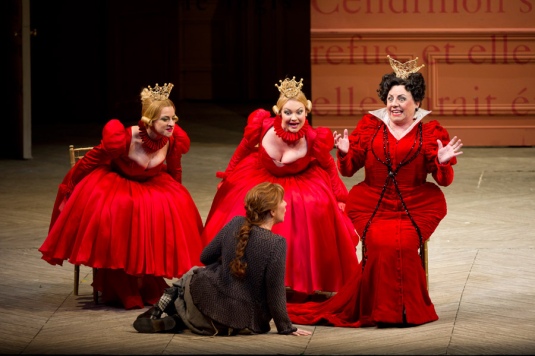






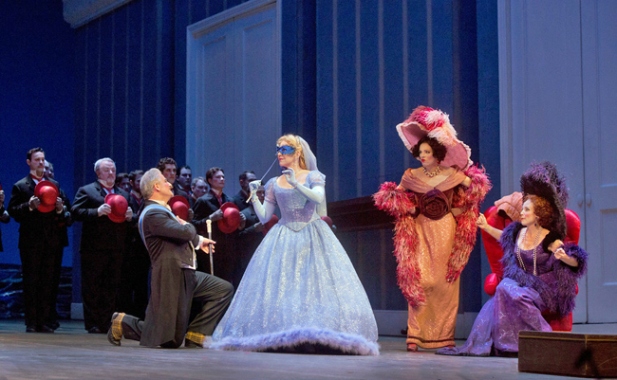

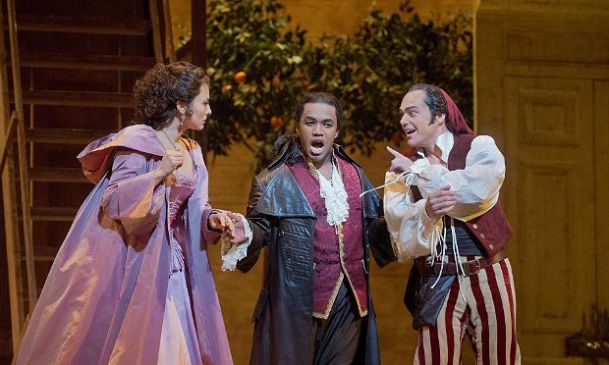
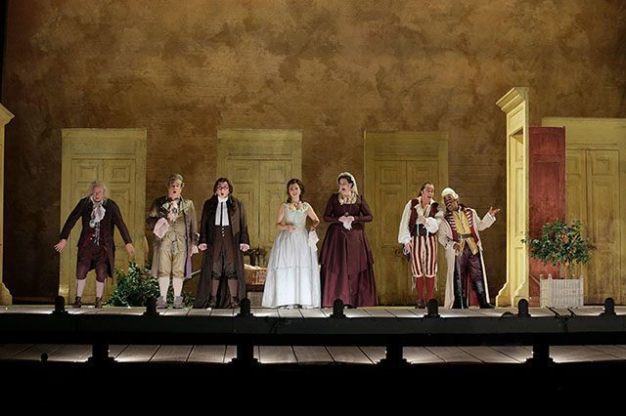
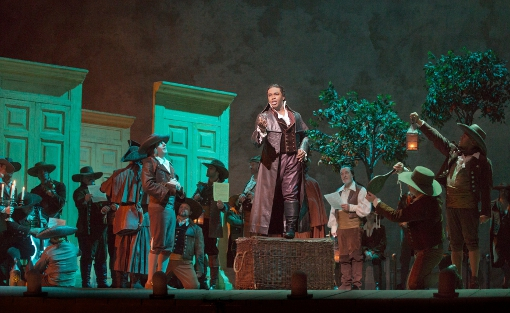
You must be logged in to post a comment.